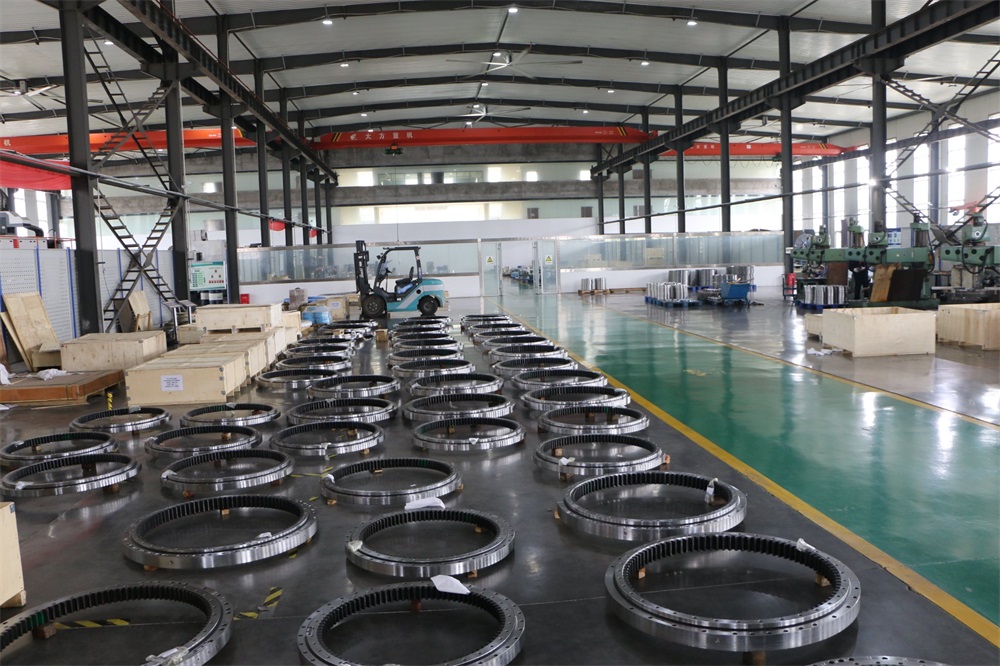Newsroom
What are Long-term Storage Standards and Matters of Slewing Bearings?
In industrial equipment, slewing bearings are crucial mechanical components widely used in various heavy-duty and high-precision applications. To ensure the performance and lifespan of slewing bearings during long-term storage, certain storage standards and management measures must be followed. Below is a detailed explanation of the long-term storage standards and matters related to slewing bearings.

1. Warehouse Temperature
Slewing bearings are typically coated with anti-rust agents before leaving the factory to prevent rust and corrosion. However, excessively low or high temperatures can degrade the performance of these anti-rust agents, even leading to mold growth. Therefore, the warehouse temperature should be maintained between 0-25℃. This temperature range effectively prolongs the efficacy of the anti-rust agent, ensuring that slewing bearings are not adversely affected by environmental factors during storage.

2. Warehouse Humidity
Humidity is a significant factor affecting the corrosion of slewing bearings. If the humidity in the warehouse is too high, it can lead to rust on the surface of the slewing bearings, impacting their usability. To prevent this, the humidity of the warehouse air should be kept between 45%-60%. This can be regulated using dehumidifiers or air conditioning systems to maintain suitable environmental conditions.
3. Warehouse Environment
Slewing bearingsshould be stored independently to avoid mixing with other items. If they must be stored together with other items, it is essential to ensure that these items do not contain acids, alkalis, salts, or other chemicals. This is because such chemicals may react with the slewing bearings, causing surface corrosion. Therefore, selecting an appropriate storage environment is key to ensuring the long-term stability of slewing bearings.
4. Regular Maintenance
To ensure that slewing bearings maintain good performance during long-term storage, it is recommended to conduct regular maintenance every six months. This includes checking whether the anti-rust treatment is intact and whether there are any signs of rust on the skeleton seal packaging. If rust is detected, the skeleton seal packaging should be opened immediately to prevent other chemicals from entering and causing more severe corrosion issues. Regular maintenance not only extends equipment lifespan but also enhances operational efficiency.

5. Storage Location and Method
The storage location for slewing bearings should be dry and well-ventilated, avoiding direct contact with the ground to prevent moisture ingress. During storage, slewing bearings should be placed horizontally or on specialized inclined racks to avoid deformation due to gravitational effects. Additionally, impact loads should be avoided as they may damage critical components like raceways.
6. Safety Signage and Records
Clear safety signage should be set up in the storage area to remind staff about moisture prevention and corrosion protection measures. Moreover, detailed storage records should be established, including each slewing bearing's entry time, maintenance records, and status check results. These records not only help track equipment status but also provide important references for future use and maintenance.

7. Conclusion
In summary, to ensure that slewing bearings maintain good performance during long-term storage and extend their lifespan, it is crucial to strictly adhere to the above standards and management measures. Suitable temperature and humidity levels, independent storage environments, regular maintenance, and comprehensive record management are all vital aspects that cannot be overlooked. By scientifically managing the storage of slewing bearings, damage caused by environmental factors can be effectively avoided, thereby improving overall equipment operational efficiency.


